“A Best of 2024 list at the end of January ‘25? Why so late? Fred, what the hell is wrong with you? I’m unsubscribing. I hate you!”
First things first: November and December were incredibly stressful for me and frankly, the first half of January wasn’t all that much kinder. Landlord troubles, constant overtime, ten-hour workdays, five-hour nights, a highly irregular food schedule, etc. etc. etc. I won’t go on about it — and anyway, things are sorted out and back to normal, whatever that means — but you’ll forgive me if I didn’t spend the end of the year pondering the state of cinema in 2024 the way I did last year. As a matter of fact, I considered not doing a list at all this time around. Upon reflection, however, I didn’t want to deprive anyone of not only hearing about films they might have missed (or simply giving a prematurely dismissed one a shot after all) but also seeing them arranged in the correct order after the onslaught of lists which put them in an order that was incorrect, if they included them at all.
But there is one question that has preoccupied my mind this past year, at least as it pertains to cinema, and that is “What will the future of the medium look like?” With films flopping left and right, cinemas shuttering, and film industry working conditions worsening amidst battles surrounding AI, corporate consolidation, and an increasingly disinterested public, it’s a question that poses itself, really. You could list issues all day and anyone who knows me, knows that I regularly do so. As you will see below, I still enjoy a good (and sometimes not so good) big-budget spectacle and assorted genre flicks but many of the films that made the biggest impression on me in 2024 were the films that went the exact opposite way: small(er), unassuming, low-fidelity, sometimes sketch-like works — my friend Daniel Gorman has collected a few films that share this somewhat obscure sensibility in a handy Letterboxd list — that boast not only a unique vision but also a possible way forward for a medium in crisis.
Can a willingness to ditch bland “professionalism,” exorbitant budgets, and, in some cases, conventional narrative coherence turn the tide? It’s unlikely. But like many of the films that have made their mark throughout history, a lot of the works on this list exist in opposition to the trends of the day, be those trends economic, ideological, formal, or aesthetic. So please, consider this exercise (whose vanity does not escape me, for what it’s worth) as part of an ongoing process that will, eventually, grant a few deserving pictures their place in the canon and also, hopefully, allow some joy and humor to find their way in. To paraphrase Bill Hicks, it’s just a ride after all.
(Note: for consistency’s sake, I’m going by U.S. theatrical or streaming release date.)
Honorable mentions (in alphabetical order)
Anora
Sean Baker’s screwball comedy is undoubtedly fun for long stretches but it also feels featherweight and inessential — one could go further and even call it pointless — in a way his previous work hasn’t, not to mention the fact that his navigation of different emotional spheres feels slapdash this time around (the film never quite recovers from the post-romcom tonal shift). In the same vein, his oft-lauded humanism has begun to feel somewhat trite as well but Baker remains a fantastic director of actors and one of the few popular filmmakers who knows what to do with someone of Mikey Madison’s talent and charisma.
The First Omen
A pretty serviceable film overall — such a shame that it has to shift into prequel mode for the ending — but Nell Tiger Free is a magnetic screen presence with pretty much perfect features and the necessary willingness to work against them in a way that serves nunfuck faux-body horror like this. It certainly takes guts to pull off an Isabelle Adjani tribute the way she does here.
Gladiator II
It’s hard to argue that Ridley Scott’s Gladiator sequel succeeds in eclipsing the first one but there is a shocking nastiness and cynicism to how it chooses to undercut its predecessor’s mythology. But even with that put aside, the film is also just a lot of fun: over-the-top battle scenes, ridiculous historical anachronisms, out-of-nowhere plot shifts, various mutilations and beheadings, and a Denzel Washington performance for the ages. Said Washington during the press tour: “I’m putting this dress on, these rings and I’m going crazy.” The proof is in the pudding.
The Last Stop in Yuma County
There’s a love for the medium and for the pleasures of B-movie filmmaking in particular that comes through in Galluppi’s sensibilities. Although his firstling echoes the Coens and Tarantino, his scrappy, up-by-your-bootstraps devotion — aside from the usual challenges associated with getting a film made, the director apparently also sold his house to help with financing, an admirable sacrifice — harkens back to Joseph H. Lewis, Anthony Mann, and Russell Rouse.
Read my full review of Francis Galluppi’s The Last Stop in Yuma County here.
Look Back
Cloying in spots (the way anime often is) but the quieter moments provide a nice, necessary counterbalance. It also looks wonderful and its explorations of the creative process, collaboration, and companionship don’t feel like an excuse to indulge in cheap sentimentalism, even if the tone occasionally overpowers the dramatic substance.
Mars Express
Imagine if Ghost in the Shell and Blade Runner were less visually stunning, lacked their philosophical and spiritual depth (Batty’s soul ascending to heaven during the ending of Blade Runner remains one of cinema’s greatest miracles, on par with Inger’s resurrection in Carl Theodor Dreyer’s Ordet), and were very French and you’d get a rough idea of what Mars Express is like. This may sound like negative criticism but the reality is, few films are Ghost in the Shell or Blade Runner (most aren’t even Blade Runner 2049) and what director Jérémie Périn, who also directed this notorious music video, put together here is tight, fun, smart, and intriguing enough to stand above its more air-headed adult animation brethren.
Megalopolis
I remember that this film was pitched as this film that we need and obviously you can’t go into a film thinking that doesn’t mean anything. But at the end of the day, it’s just art. As important as it is, as much as a lot of us build our lives around it, it’s still just art. You can’t thrust that kind of responsibility on one film. Watching it, I thought, “This is great, this is visually sumptuous. A lot of it is unpleasant but unpleasant in interesting ways.” But I don’t know if we “need” big, indulgent, $120 million projects. I don’t know that the film accomplishes that particular ambition. Say what you will about the compositions, about the use of superimposed images, about the dream stuff — I just don’t know if it’s this era-defining work. Then again, does it have to be?
Read my full conversation with Alex about Francis Ford Coppola’s “strange beast” Megalopolis here.
20. Incoming
Alright look: a critically-panned straight-to-streaming teen comedy might seem like a bizarre inclusion but the fact of the matter is, we don’t get a lot of genuinely raunchy R-rated comedies anymore — if we do, I haven’t seen them — so it’s great to see one that is not only hilarious (and hilariously gross) but also completely unashamed of its juvenile, teenage-boy perspective, all without leaning into lame reactionary culture war grievance bullshit. I would be lying if I said this didn’t inspire a surprising, and perhaps silly, amount of hope in me.
19. Trap
It’s a fact that only survives as a faint memory these days but M. Night Shyamalan used to be the butt of countless jokes that took aim at his propensity for twist endings, the supposed declining quality of his films, and, most regrettably, his Indian last name. It is, however, also a fact that he is one of the only mainstream filmmakers who has studied the old masters and his latest Hitchcockian thriller is further proof that Shyamalan’s own name deserves the adjective treatment down the line. The Shyamalanisms all here: dizzying cinematography, rich subtext, weirdo humor, quasi-Brechtian gestures, and a killer lead performance.
18. Furiosa: A Mad Max Saga
How or why exactly 2015’s Mad Max: Fury Road became a universally-beloved action milestone will likely forever remain a mystery to me. So mysterious in fact, that I approached the clunkily-titled Furiosa: A Mad Max Saga, George Miller’s latest entry in the classic series, with a healthy bit of skepticism, skepticism that faded away within the first ten minutes. Besides the expressionistic visuals, rough-around-the-edges assembly (this is a compliment), and pseudo-historical heft that make Miller’s latest so gripping, this also comes down to its cast.
Anya Taylor-Joy, for instance, has the look — an elusive quality — that makes her an incomparable presence on the big screen amongst the current crop of mostly bland young A-listers and the final showdown between her Furiosa and Chris Hemsworth’s equally excellent Dementus feature several low-angle shots which highlight her unique features. Watching that scene on an IMAX screen while your ears are still ringing from the action set piece that preceded it — if that’s not what big-budget action cinema is all about, I don’t know what is.
17. One More Shot
A definite improvement on the first one (2021’s One Shot), which itself was already a perfectly serviceable DTV actioner. One More Shot picks up a few hours(?) after its predecessor’s finale and swaps that one’s Assault on Precinct 13-type premise for something more reminiscent of Die Hard. The one shot gimmick is put to better use here, emphasizing the film’s real-time nature over the technical trickery. As a matter of fact, it’s easy to forget this is made to appear as one continuous shot at all.
Unsurprisingly, the dialogue- and exposition-heavy bits are the weakest — hard to add the necessary rhythm to dialogue scenes without noticeable cuts — but director James Nunn does a good job of keeping them to a minimum and ratcheting up the tension as soon as the necessary information has been imparted on the audience. And boy, some of these action scenes hit like a motherfucker.
16. Do Not Expect Too Much from the End of the World
Debates surrounding artists’ ability to capture the Current Moment are a fixture of the broader film discourse, often revolving around the simple question of yes or no. But these things exist on a spectrum, not a binary, and on that spectrum, Radu Jude’s Do Not Expect Too Much from the End of the World sits firmly on the “timely” end — loudly, obnoxiously so. But! We live in loud, obnoxious times and sometimes the only way to meet the moment is via TikTok filters, aggressive manosphere influencer personas, dispatches from the gig economy hell, uncomfortable car sex, Uwe Boll cameos, and spliced-in excursions into a past that was every bit as thorny and complicated as the present. And the fact that Jude manages to bring all of this home with a nearly hour-long one-take scene that touches labor exploitation, post-Cold War bureaucracy, and Romanian history — all while being funny as hell — makes Do Not Expect feel like the opening salvo of something major.
15. Drive-Away Dolls
Very obviously made by the goofier half of the often darkly comedic directing sibling duo the Coen Brothers — since their separation, Joel, the other half, has made the dour The Tragedy of Macbeth — Ethan Cohen’s Drive-Away Dolls is an excellent, unpretentious B-movie jaunt, chock-full of goofy transitions, psychedelic intermezzi, and a cast of charmingly eccentric characters. In a perfect world, we’d not only get more movies like this, but they’d be directed by people who aren’t Academy Award winners. Oh well, you take your victories where you can get them.
14. Plastic
Much like it characters, the film itself, on a structural and formal level, feels out of time; or rather, like something transplanted into the present from decades past, barely reskinned, barely updated. Having cokes in diners, dress-up montages that double as tributes to acts like the Stooges and David Bowie, a first kiss at a provincial movie theater (that, wouldn’t you know it, happens to be playing Miyazaki’s 2019 film Videophobia, a charmingly anachronistic touch) — if it wasn’t for the occasional Zoom convo, talk of scanning QR codes, or on-screen text exchanges, facilitated through an app called “Line,” Plastic could pass for a 2000s indie romance. Two lovers who don’t fit in find each other before life inevitably forces itself between them.
These are easy connections to make, especially as a means of light mockery, but what makes Miyazaki’s coming-of-age story so infectious is its proximity to Peter Chan’s Comrades, Almost a Love Story. Miyazaki overlays his modest, simple story of young love with a remarkable grandness by gesturing at not only the grander socio-political circumstances that shape human relationships — aside from the pandemic itself, the film also gets at the difficulties of art-making in a world shaped by tech companies, the loss of venues and record stores as hangout spots — but also some good old-fashioned, if maybe a little quaint, fate.
Read my full review of Daisuke Miyazaki’s Plastic here.
13. A Traveler’s Needs
Unfortunately, I have never been all that good at writing (or talking) about Hong’s work, regardless of how meaningful it has been to me. There is just something about it that keeps me hooked, something that keeps me coming back, something that’s, perhaps, beyond my vocabulary and to be honest, I’d rather avoid the common banalities about “the beauty of the small moments” or whatever the hell hack critics like to pad their writing with. So let me just leave you with six adjectives and an adverb: wonderful, beautiful, sad, serene, radical, endlessly fascinating.
12. It’s Not Me
A (rather shamelessly) Godardian essay film that spans director Leos Carax’s 40-year film career as well as his anxieties surrounding politics, aesthetics, fatherhood — “What kind of world is my daughter inheriting?” seems to be the axis around which many of his concerns turn — and, in a very memorable one-off, Roman Polanski the Holocaust survivor, filmmaker, and rapist. It’s tempting to dismiss It’s Not Me as a pale imitation of something as monumental and dense as Histoire(s) du cinéma but in its limited scope and productive solipsism — it matches Histoire(s)’s 266-minute runtime, decade-long creation, and attention to an (almost) century-spanning history of the medium with a modest 42 minutes comprised mostly of footage from Carax’s own body of work — it finds a fire that is all its own.
11. Dahomey
Mati Diop’s decision to open her documentary Dahomey with a fantastical voiceover that gives voice to a statue representing King Ghézo, one of the 26 artifacts whose return to Benin from the Musée du Quai Branly – Jacques Chirac in Paris the film chronicles, is a curious one. On one hand, it risks tethering the film to the kind of vague primitive conception of spirituality and history that panders to Western audiences’ ideas about Africa. But on the other, it does illustrate the wide and, at times, contradictory ideas at the heart of the film.
By contrasting the tone, character, and rhythm of the voiceover with the tactility of the wide exterior shots — the eerie tranquility of some of these recalls the likes of Ghost Tropic (2019) and Pacifiction (2022) — and the tight frames and busy cutting of the lecture hall sequences where students engage in an engrossing discourse about the repatriation of the objects and the legacy of colonialism more broadly, Diop creates an uneasy and, finally, unresolved tension that is bound to frustrate but, given the subject matter, feels more than appropriate.
10. Coma
The pandemic as a media-saturated psychological apocalypse. Going by (American) critics and publications’ year-end lists, Bertrand Bonello’s underwhelming The Beast was all the rage in 2024 but it is Coma’s cinefugue essayism that most astutely looks at Our Current Moment. The analog, the digital, the real, the imagined, the old, the new, dreams, waking life, the past, present, and future; they all blur and bleed into each other, winding like serpents through time distended. This isn’t speculative filmmaking, this exactly what dystopia looks and feels like in the 2020s: an assault of images, a life spent in limbo.
9. Evil Does Not Exist
What’s so encouraging about Ryūsuke Hamaguchi’s international acclaim is that he is a filmmaker more or less unconcerned with the trends of the contemporary arthouse circuit and all the film festival slot fillers that occupy it. No scene illustrates this better than the community meeting where village residents discuss the minutiae of a proposed glamping (a hideous portmanteau of “glamorous” and “camping”) site, including the placement and capacity of a septic tank. Not many filmmakers would think to put politics on screen in such a way but in the era of broad, frequently pat, political declarations, Hamaguchi’s decision feels more radical than any torturous, jargon-laden monologue.
8. Juror #2
It’s unsurprising that people have latched onto Juror #2’s critique of American institutions and the nuclear family as a sight where reaction springs from — readings I endorse, for what it’s worth — but as I continue to soften with age, I find myself primarily moved by Hoult’s Justin Kemp, his struggle to stay on the straight and narrow, and the moral complexities that open up in front of him as a result. The countless shots of Lady Justice, blindfolds, and motto-adorned plaques (“In God We Trust”) outline the film’s political prodding but it’s the shots of Kemp crying in his car, racked with guilt, that proved most affecting.
7. Red Rooms
Of course the entire critical establishment and online film circles were too busy gassing up the middling Anatomy of a Fall to give this the attention it deserves. Red Rooms is actually provocative, actually interested in the depths of human psychology, curious about how an existence mediated through screens and interfaces affects us. It’s worlds removed from the the kind of cinema that lends itself to snarky throw-away tweets, scoring easy points in the culture war arena, or Academy Award recognition — and it’s all the better for it. Anyone let down by Unfriended: Dark Web’s lack of political courage will be better served by Pascal Plante’s frightening vision.
6. Close Your Eyes
Close Your Eyes is a film of extraordinary richness, brimming with ideas, emotion, sentiment. Unlike director Víctor Erice’s previous work, the film isn’t “beautiful” in any common, conventional sense. In fact, the film’s aesthetic seems preoccupied with working against these notions entirely: cold, digital cinematography capturing unremarkable spaces; it’s the furthest thing from virtuosic, in fact, when contrasted with the footage of the film-within-a-film we occasionally catch glimpses of, Erice appears to have conceived of his latest as an oppositional statement against what could be described as the “aesthetification” of cinema as a whole — an interesting approach, considering his picture’s preoccupation with the medium of film itself.
But of course, beauty does creep in, beauty of a more complicated, less tangible kind. Writer Sam Warren Miell (who authored a fascinating piece on The Zone of Interest last year) describes the film’s “slow procession of quiet scenes” as ending up in “a slow dance around a cinematic void of some kind” a description that certainly holds true at least until the coda’s mesmerizing aria on gazes, to borrow from an alternate title of Hisayasu Satō’s The Bedroom. This is not Cinema Paradiso, not a wondrous ode to the “magic of cinema” but rather a work that puts itself in a critical relation to it — dialectical cinema, a cinema of questioning, of inquiry. A particularly instructive moment: “Miracles in movies haven’t existed since Carl Dreyer,” says one character to another, only for the film’s final moments to subvert this hypothesis.
5. Music
This capsule review originally appeared in In Review Online’s “Best of 2024” roundup on December 26, 2024:
Angela Schanelec’s Music is something of an enigma, a tale that doesn’t quite reveal itself, a film shaped and assembled like an abstract painting or a protracted, repetitive psychedelic tune in the vein of “Hallogallo” and “Für Immer,” the opening tracks of Neu!’s first and second albums, respectively. The knowledge that Schanelec’s mysterious drama is a retelling of the Oedipus myth will only take audiences so far, but it does make for an interesting contrast between the formal austerity — the 108-minute film is comprised of something like 160 shots, for instance — and the images the director captures, which are so clearly imbued with a mythical force.
Robert Bresson is an obvious reference point for this kind of spare European arthouse cinema, but you could just as easily compare Schanelec’s approach, especially her preference for fixed camera angles, to such filmmakers as Erich von Stroheim (sans the lavish set designs) and Ricky D’Ambrose. Like the latter’s The Cathedral, Music will at times leap ahead years at a time in a single edit, but unlike that film, Schanelec’s does so with no voiceover and barely any dialogue to help us grasp its slippery relationship to time. But by eschewing the narrative and formal conventions that even most arthouse fare falls back on, the film does open up an avenue for us to consider an aspect that is all too often neglected: the Image. And with images this profoundly hypnotic, this extraordinarily beautiful, anything more would feel like an intrusion.
4. The Shadowless Tower
The digital clarity of Zhang Lu’s images is deceptive as it, paradoxically, obscures the mystery they contain. The Chinese-Korean filmmaker is frequently compared to Hong Sang-soo, a comparison that isn’t without merit, but Lu’s films often addend their ostensible realism with subtle magical realist touches that are powerful enough to recontextualize the very milieu they take place in. As such, The Shadowless Tower can certainly be considered to be a film about Beijing, or more specifically, a film about how its inhabitants navigate it, physically as well as emotionally. The way the crystalline cinematography plays against the murkiness the film’s preoccupation with memory evokes is exceptionally haunting. It’s the kind of unassuming drama one wishes one could be completely enveloped by.
3. Last Summer
This capsule review originally appeared in In Review Online’s “Best of 2024” roundup on December 26, 2024:
It says a lot about Catherine Breillat’s body of work that her latest transgressive drama, Last Summer, doesn’t feel all that transgressive. Where others would waver and undercut the blurring, graying lines of desire, consent, and manipulation, Breillat transcends them, her willingness to push buttons emerging from a commitment to honesty rather than a lust for empty provocation. There’s a brutality to the film’s emotional and sexual frankness, one conjured by Breillat’s brilliant use of closeups but also the ever-shifting dynamic of the two leads’ performances: with every encounter, Théo’s (Samuel Kircher) teenage troublemaker cockiness, already a flimsy cloak for his teenage insecurity, unravels as Anne’s (Théo’s stepmother, played by Léa Drucker) disposition hardens into a mask. The shifting temperature of their physical relationship not only plays against their emotional states, but also the public-facing theater in which they both participate.
Breillat’s films, even the ones as straightforwardly dramatic (read: less experimental) as this, have a political-historical dimension as well, but filtered through Last Summer’s icy psychodrama politics and history here become inscrutable, malicious. An example: the legacy of the sexually liberated 1960s figures into the story not as nostalgia but as a time of cultural upheaval that was quickly subsumed by bourgeois society and left its children vulnerable and, it is implied, traumatized. It’s one of the many ways in which the film feels out of step with filmmaking trends — how often are the attitudes of the sexual revolution connected to anything sinister? — but it’s the director’s ability to stare the consequences of her characters’ behavior straight in the face without falling into easy judgments that truly sets her apart.
2. Revolution+1
"Brother, I think I'm heading towards the stars."
Masao Adachi’s latest is a rather crude bit of agitprop — it was put together within a few weeks of Shinzo Abe’s assassination — but it's all the more powerful for it. Revolution+1 obviously brings to mind the filmmaker’s 1975 documentary A.K.A. Serial Killer in that it seeks to lay bare the conditions that give rise to certain aberrant behaviors, although he is surprisingly more concerned with Tetsuya Yamagami’s emotional architecture than he is with Japan’s societal one. (Is there even a meaningful distinction between these spheres?) Very, very few films being made these days feel this incendiary, this alive.
1. Chime
This review originally appeared in In Review Online on May 27, 2024:
It might be a little premature to have the “late style” conversation with regard to the highly prolific Kiyoshi Kurosawa, who turns 69 in July. But if we accept that a distillation of an artist’s previous style and preoccupations is at least part of what we have termed late style, it might be instructive to consider his latest, Chime, in this context. (It won’t be his latest for long, since he has two more projects due to premiere this year.) The 45-minute film both contrasts his most acclaimed works — Cure (1997), Pulse (2001), Tokyo Sonata (2008) — by running less than half their length, and also harkens back to his humble pinku eiga beginnings (1983’s Kandagawa Pervert Wars, which came in at a genre-typical 60 minutes).
Thematically, Chime finds Kurosawa covering familiar ground, and the film’s desolate moodscapes will similarly be recognizable for anyone with even a cursory knowledge of his past output. However, there is something particularly chilling about the oppressive mundanity here, a mundanity which Kōichi Furuya’s digital cinematography adds another layer of dread to. It’s a dreary madness that slowly begins seeping into the life of Takuji Matsuoka (Mutsuo Yoshioka), a culinary arts teacher, after a disturbed student (Seiichi Kohinata) kills himself during a class. But once again, in spite of references to a mysterious chime that gives the film its title, there is no clear source, no single perpetrator to be blamed for what unfolds.
The idea of a curse spreading like a social virus is a common one in Japanese horror, and Kurosawa himself has made use of it before. Chime does indeed form a triptych with Cure and Pulse, with the filmmaker even making direct reference to the former with a characteristically passionless, seemingly out-of-nowhere knife attack that takes place in a restaurant. The film is permeated by this kind of narcotized insanity, one that renders even physical violence unsettlingly dull. Where late style enters the picture is the formal and narrative purity with which Kurosawa takes on modern malaise. It may lack the autumnal moodiness and reflective considerations usually associated with the, admittedly, somewhat opaque term, but as far as getting to see a master strip his art down to its bare essentials, things don’t often get more “late style” than this.
In spite of its skeletal form and brief runtime, the film ends on a fascinating rupture: the audiovisual sterility suddenly gives way to a cacophonous score and grainy visual textures, while the chaotic handheld camera clashes with the fixed angles Kurosawa makes use of before. The previously ambient evil becoming tangible shifts, terrifyingly, within the realm of possibility and the suggestion of this malison being made concrete becomes overbearing. Appropriately, the final reel ends on a shot of Matsuoka’s house — the domestic as a site of pure evil. Kurosawa has been here before, but not since 2006’s Retribution has his vision felt this palpably haunted.




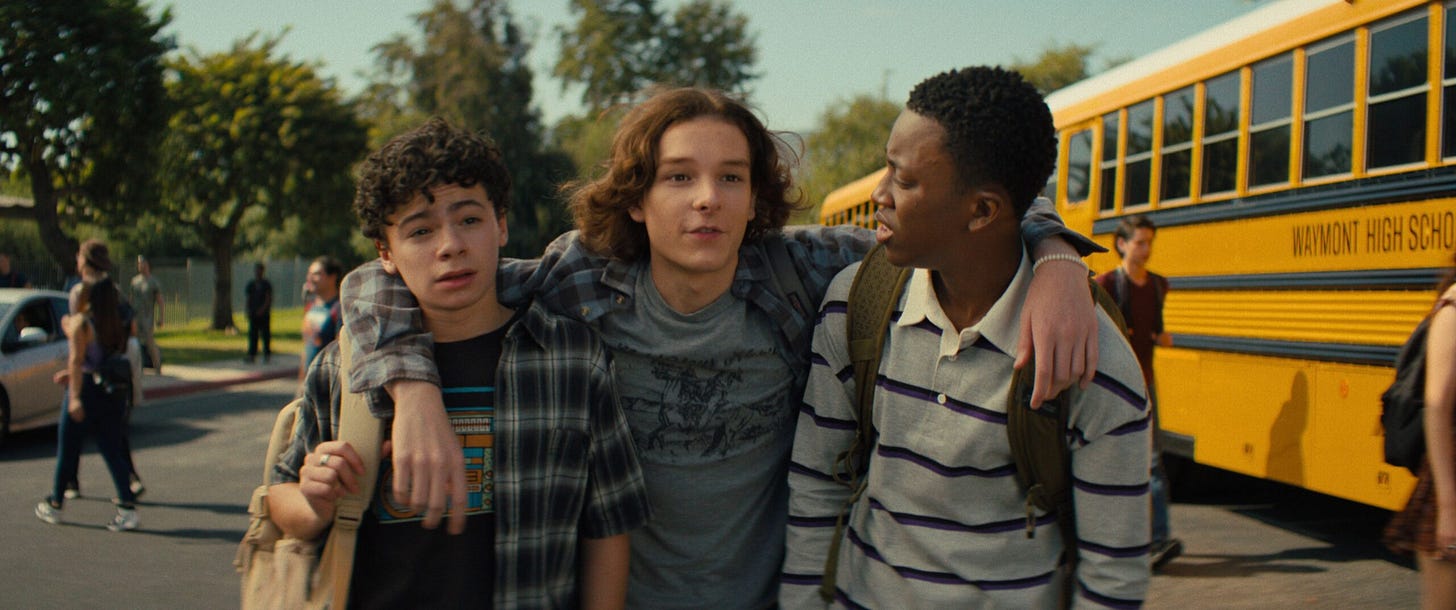
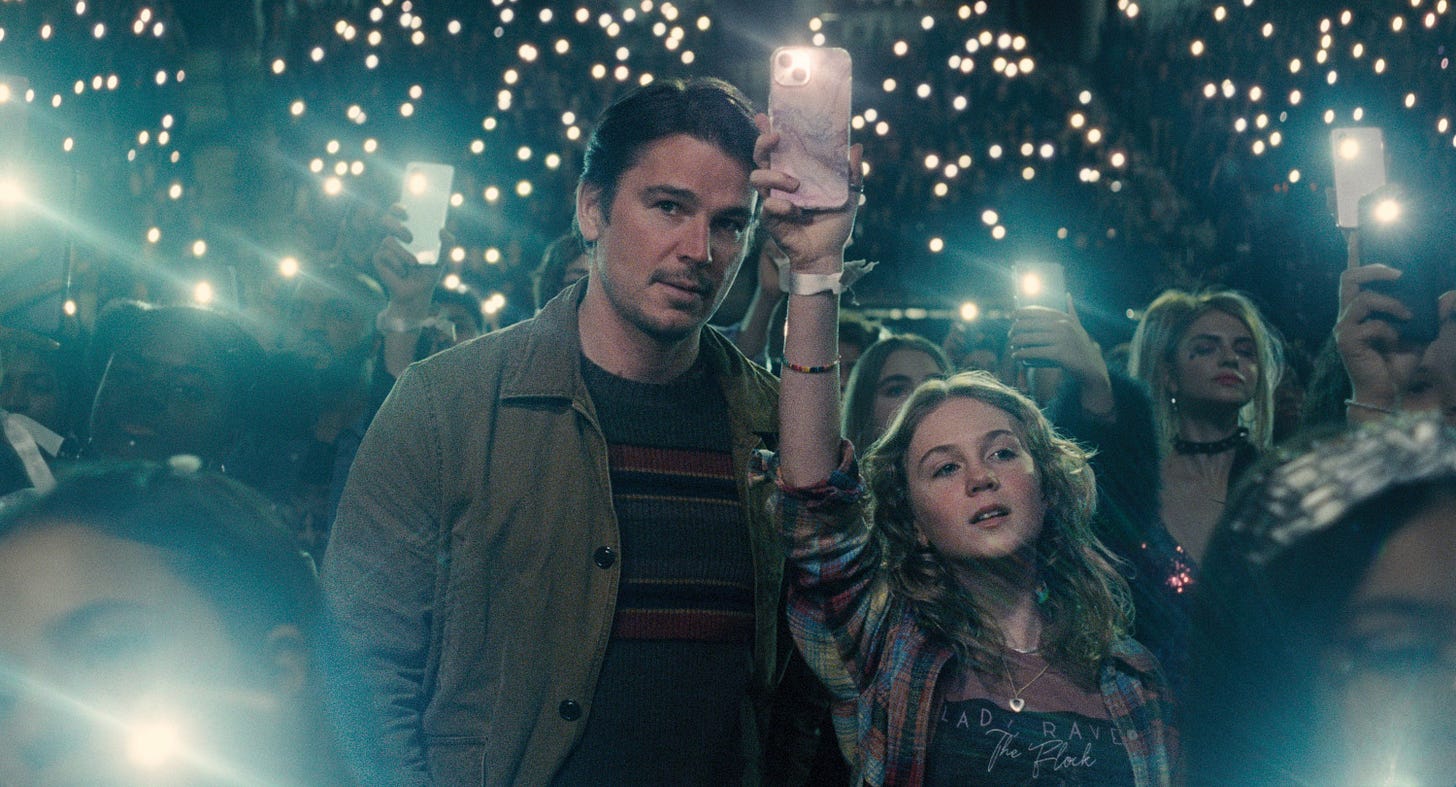
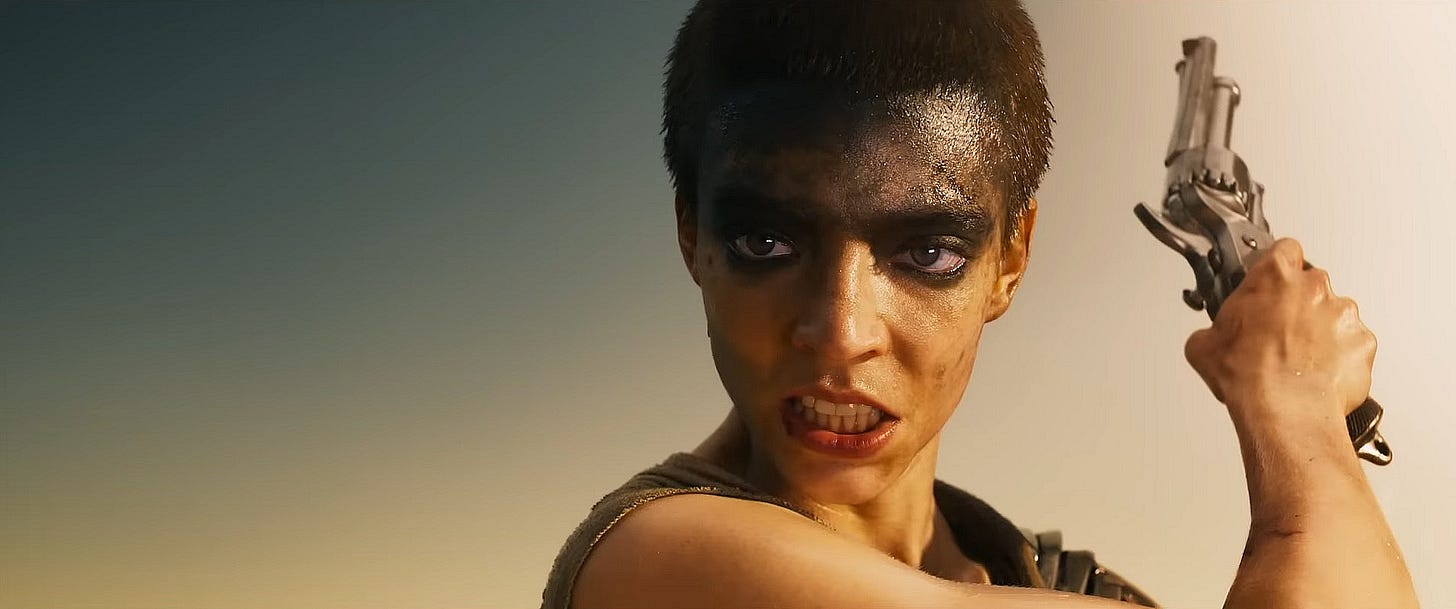
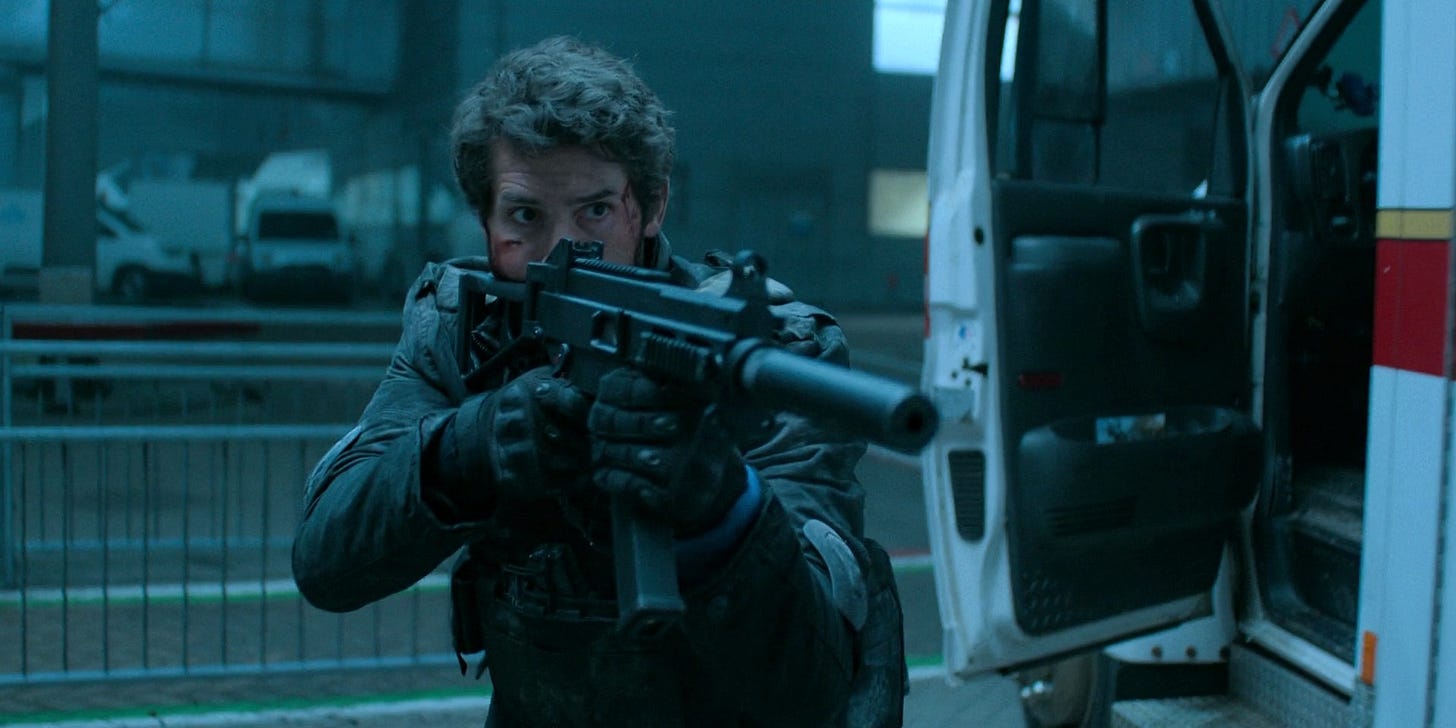

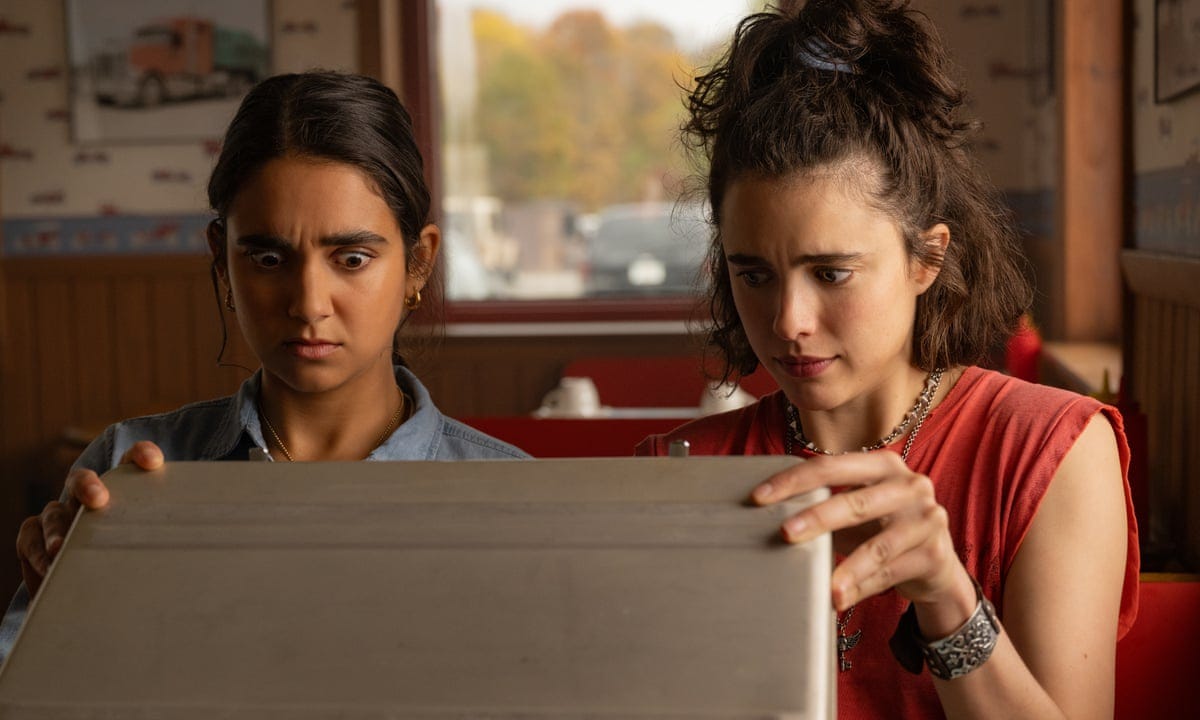
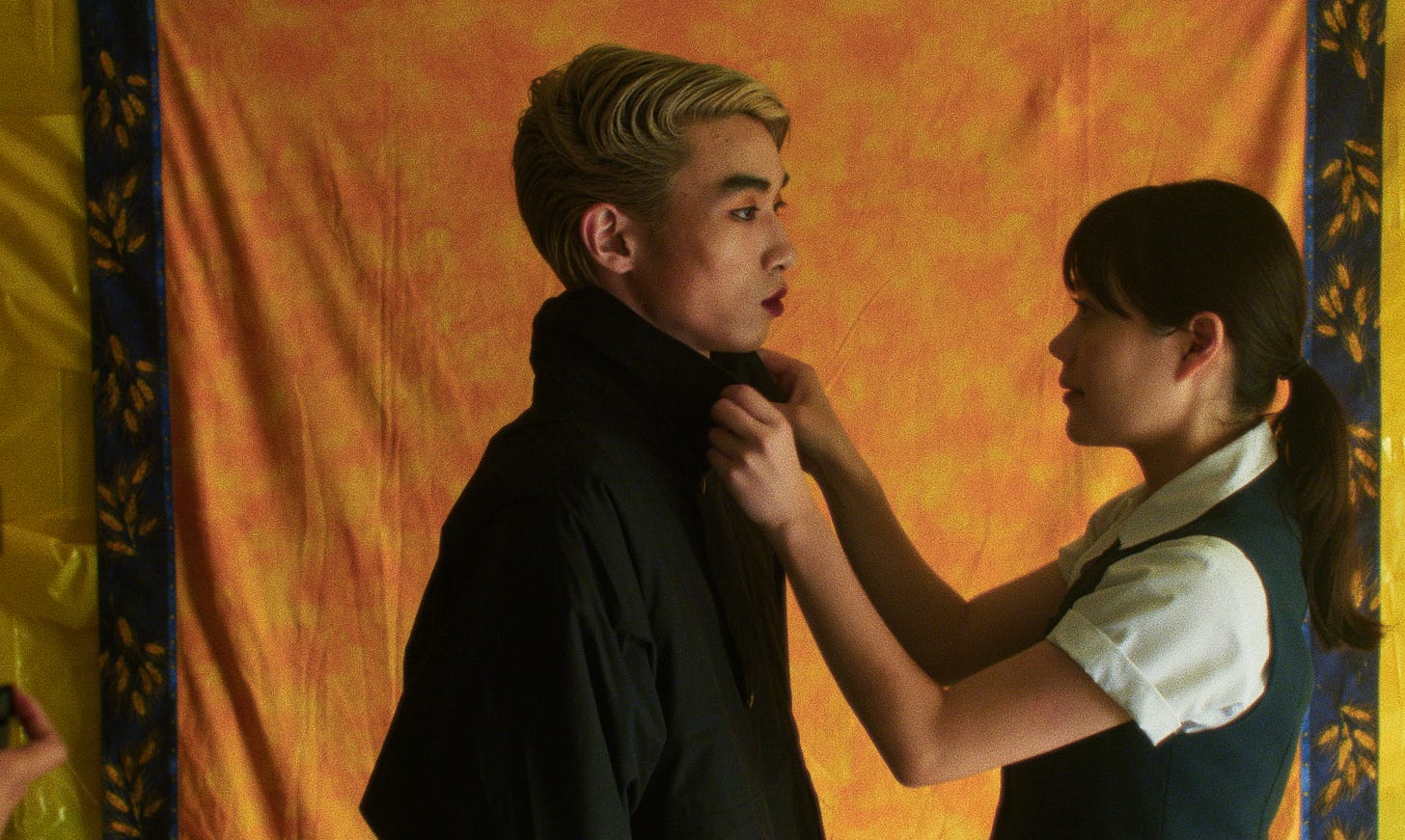




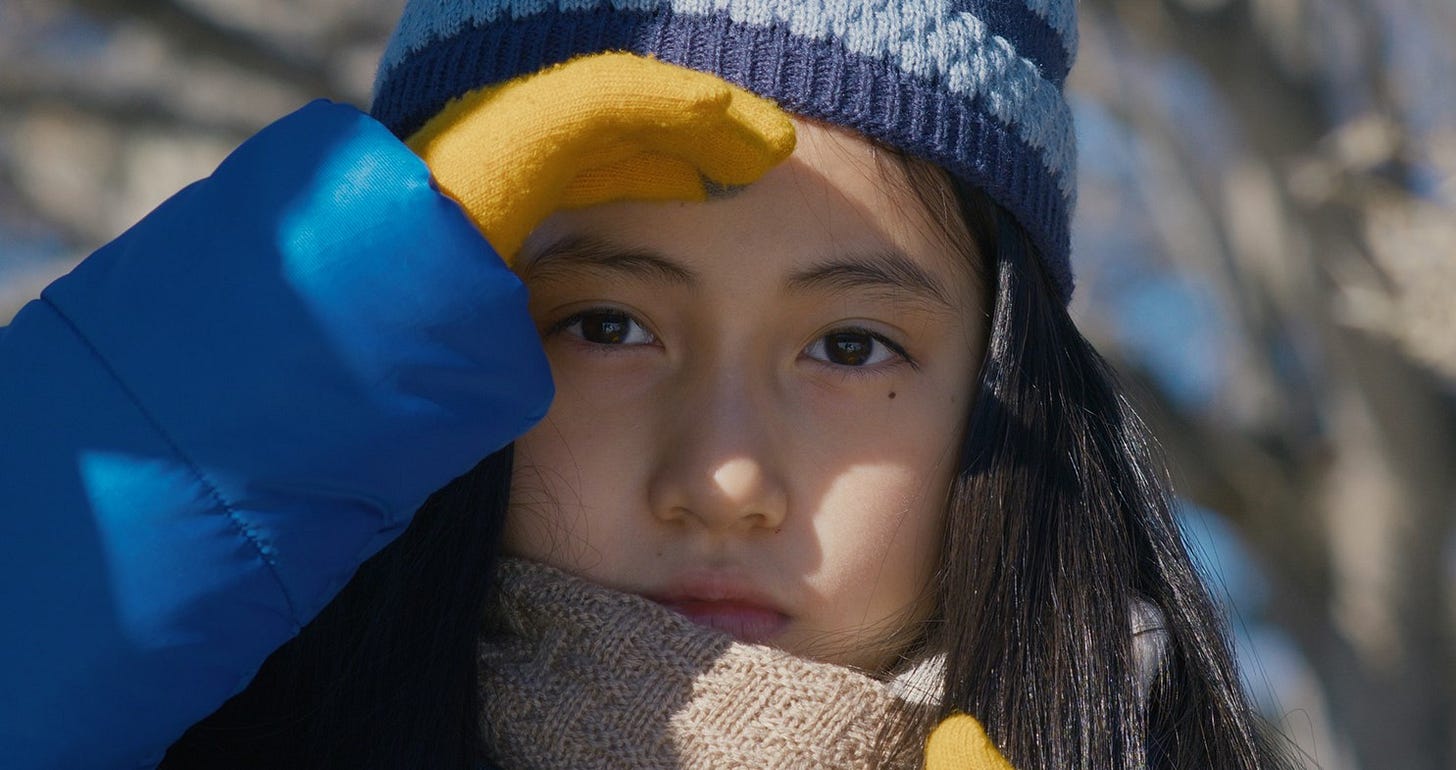
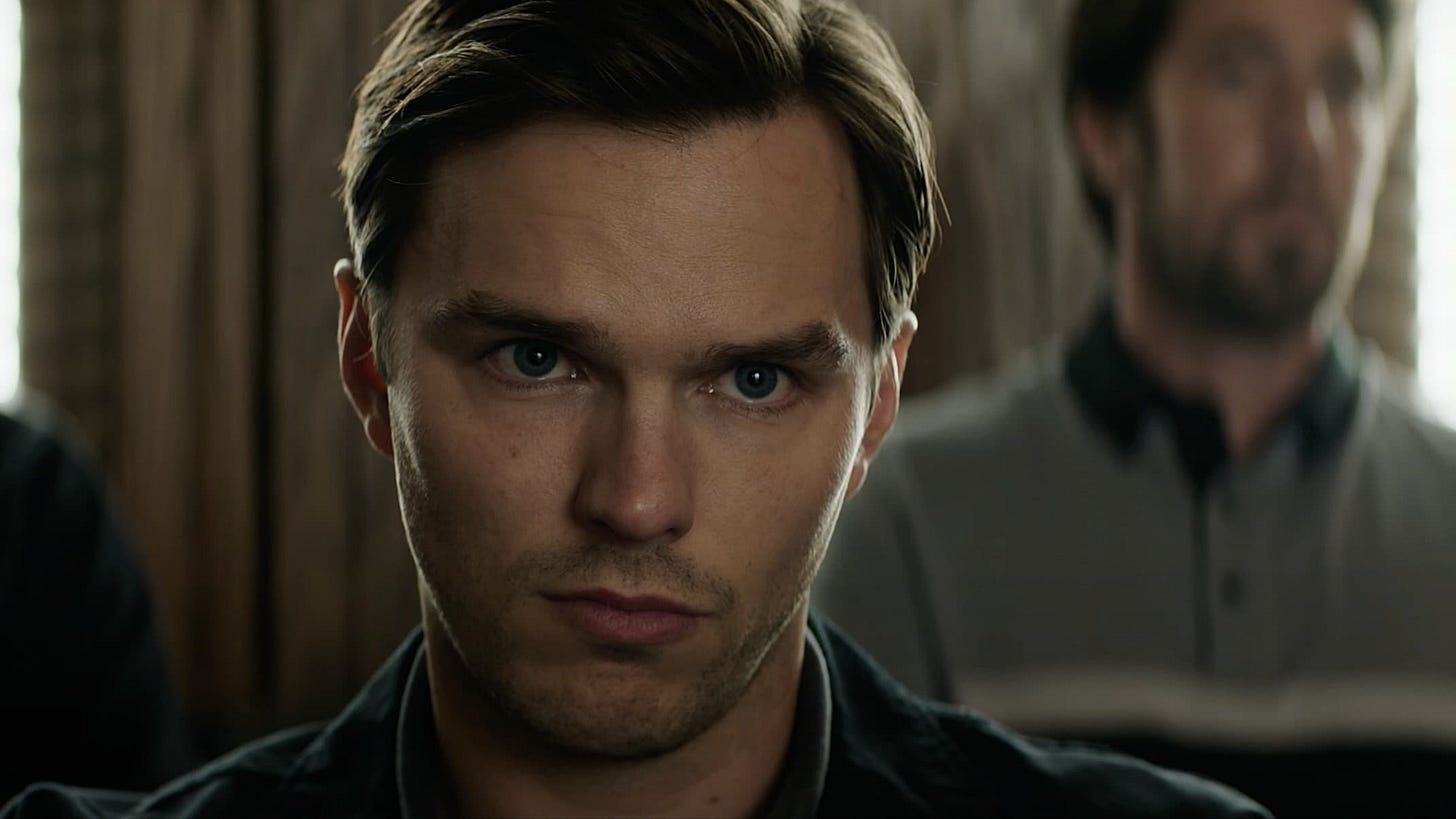

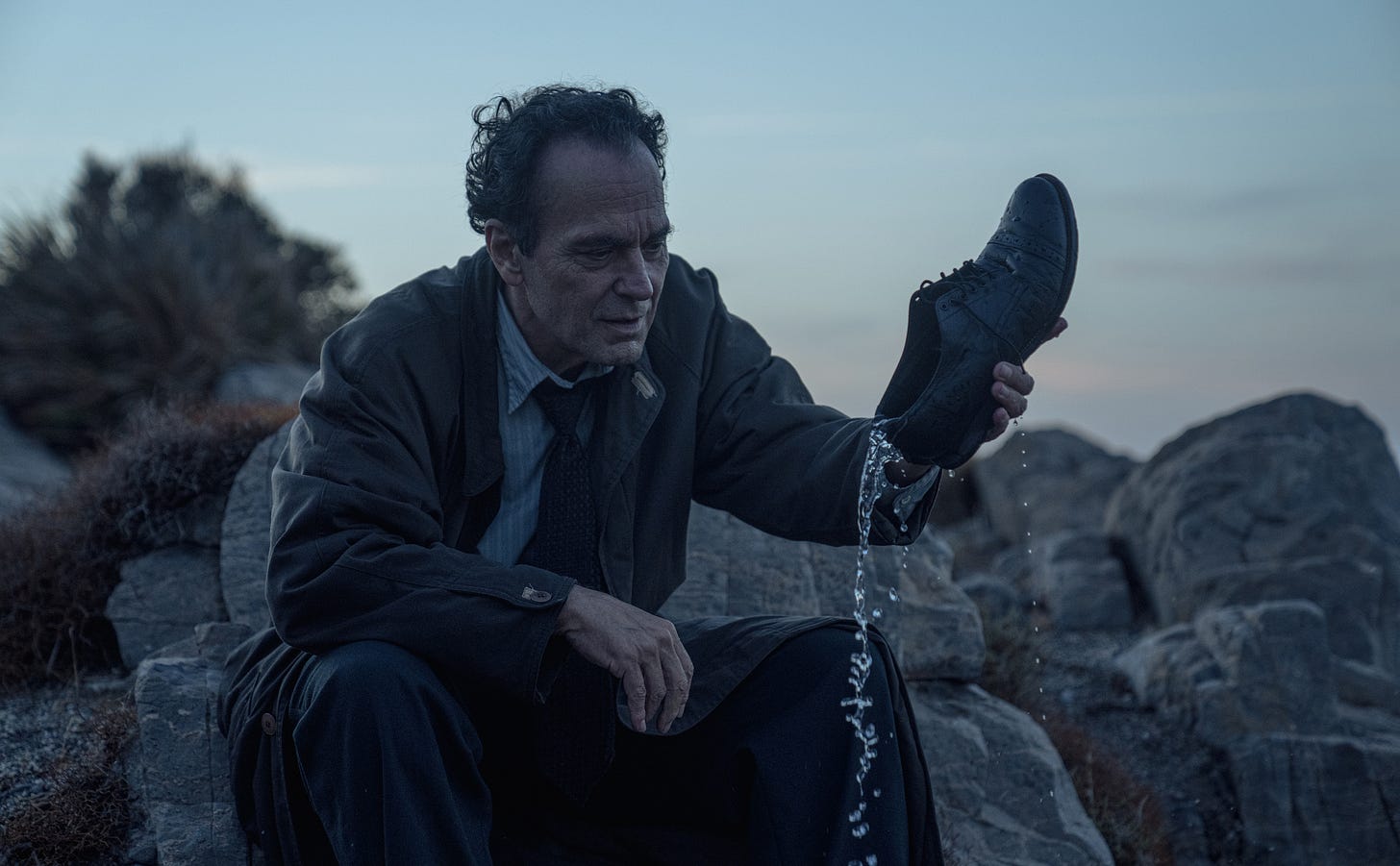

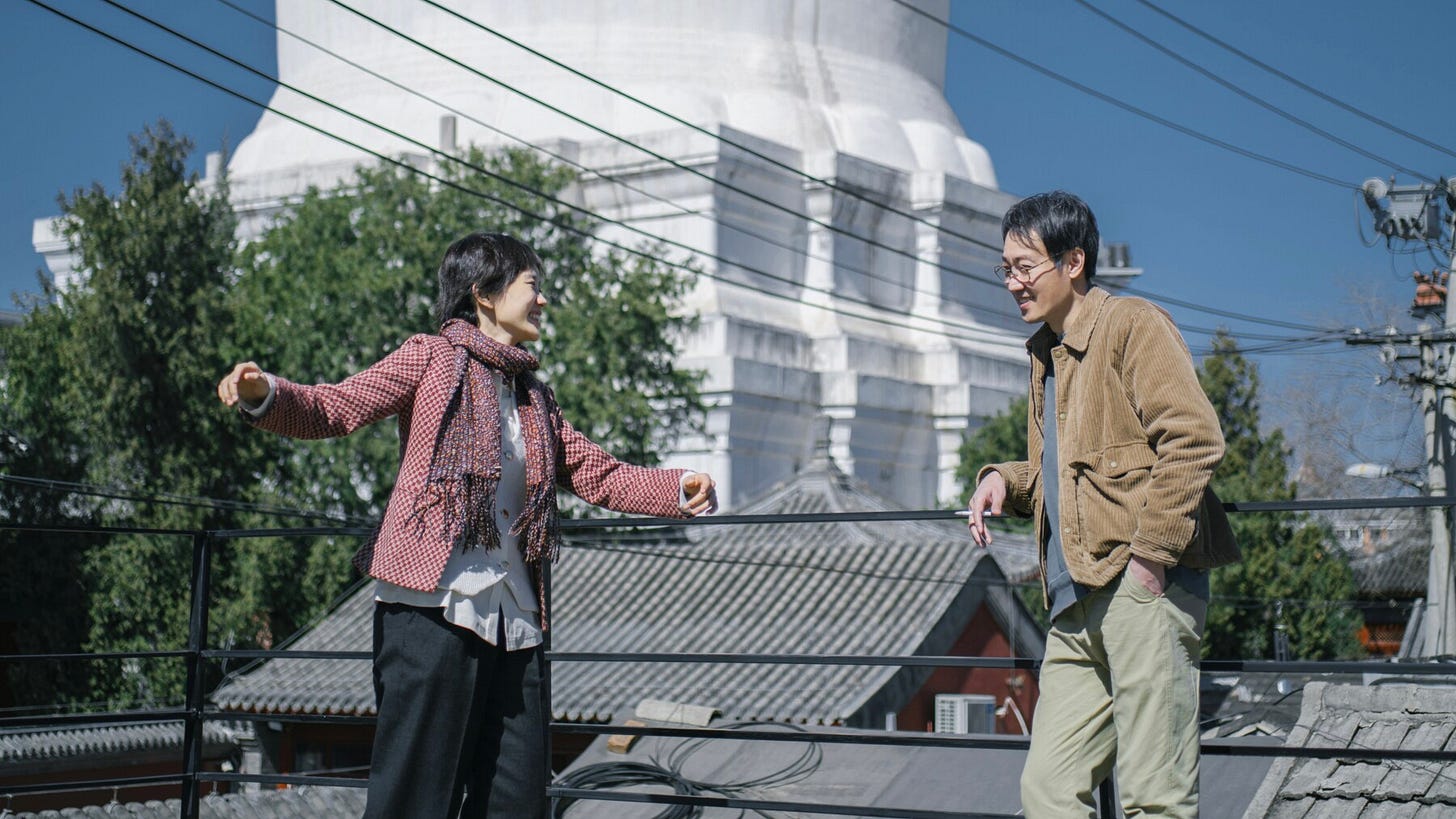

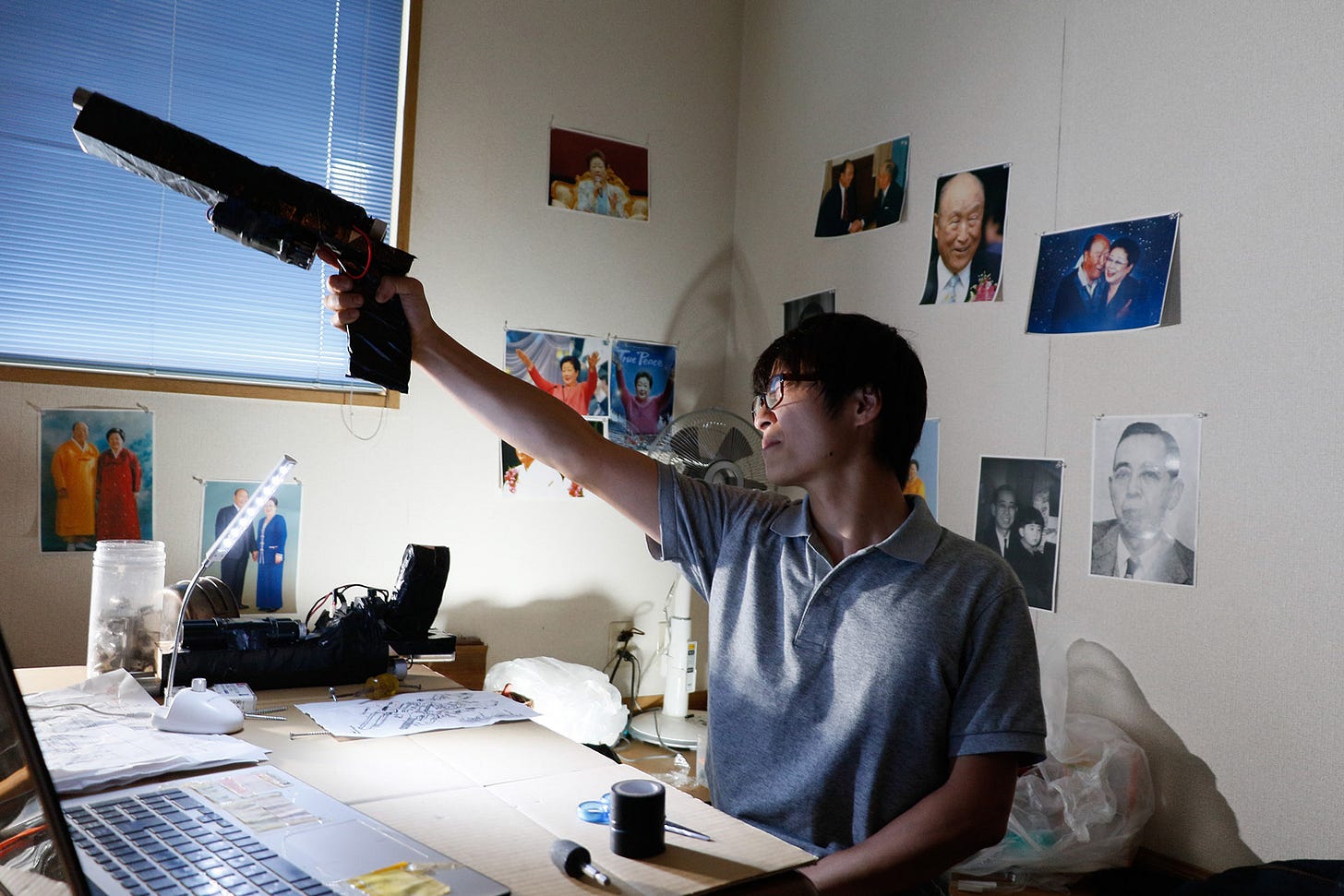

Great picks and writing as always Fred!! Added the ones i haven't heard of to my watch list!!